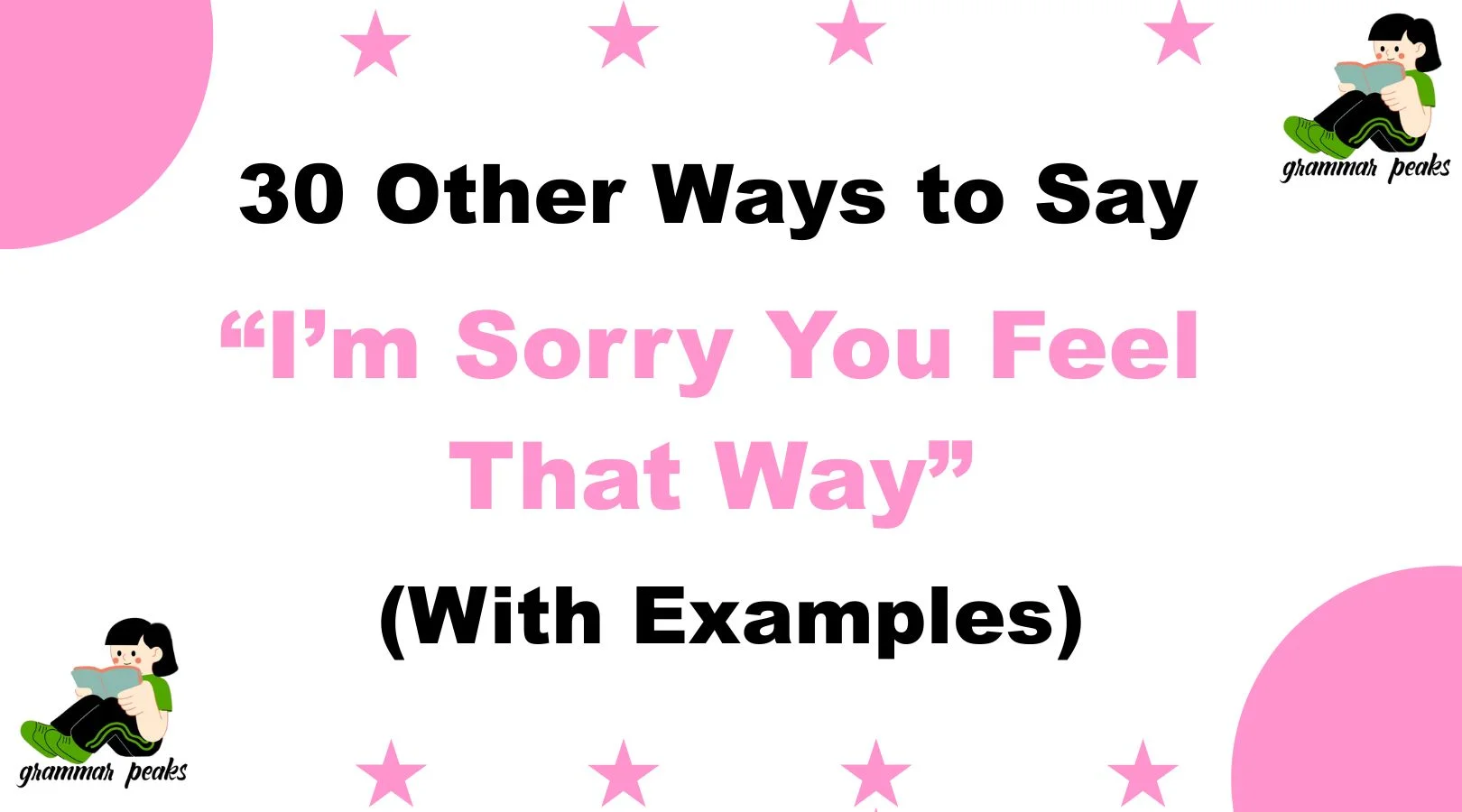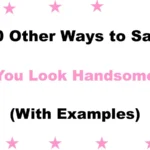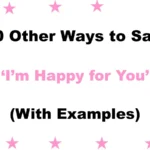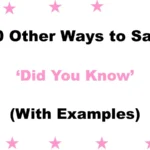In emotionally charged conversations, saying “I’m sorry you feel that way” can come across as dismissive or passive. While the intent might be to show empathy, the phrase often lacks the warmth and sincerity people need to feel heard. That’s why it’s helpful to have alternative expressions that convey compassion, validate emotions, and keep the conversation constructive.
Whether you’re trying to de-escalate a conflict, show understanding, or maintain professionalism, these 30 alternatives will help you communicate with more empathy and clarity.
What Does “I’m Sorry You Feel That Way” Mean?
The phrase “I’m sorry you feel that way” is typically used to acknowledge someone’s emotions without taking direct responsibility for causing them. It can express sympathy or neutrality—but often, it’s perceived as emotionally distant or even sarcastic. The phrase walks a fine line between acknowledging someone’s hurt and avoiding accountability.
When to Use “I’m Sorry You Feel That Way”
You might use this phrase when:
- You don’t agree with the person’s emotional response but want to recognize it.
- You want to stay neutral in a disagreement.
- You feel accused unfairly but still wish to de-escalate the situation.
However, be cautious—it can easily backfire if the other person expects a more heartfelt apology or personal accountability.
Is It Professional or Polite to Say “I’m Sorry You Feel That Way”?
In most professional or personal settings, this phrase can feel cold or passive-aggressive. While it may technically check the box for acknowledging someone’s emotions, it often doesn’t go far enough to show empathy. In leadership, customer service, or close relationships, it’s better to choose language that reflects genuine care, understanding, or a willingness to resolve the issue.
Pros and Cons of Saying “I’m Sorry You Feel That Way”
Pros:
- Acknowledges the other person’s emotions
- Maintains neutrality in conflicts
- Helps avoid taking unnecessary blame
Cons:
- Often seen as dismissive or sarcastic
- Lacks true empathy or accountability
- Can escalate the conflict rather than resolve it
Synonyms For “I’m Sorry You Feel That Way”
- I understand this has been upsetting for you
- I hear what you’re saying and I appreciate your honesty
- That wasn’t my intention, and I’m sorry it came across that way
- I see this really affected you, and I want to understand more
- I appreciate you sharing how you feel
- Thank you for letting me know how you’re feeling
- That’s valid, and I want to better understand where you’re coming from
- I can see why you’d feel that way
- That sounds really difficult—I’m sorry you’re experiencing this
- I respect your feelings, even if I don’t fully agree
- It wasn’t meant to hurt you, and I regret that it did
- I’m listening, and I want to hear your side
- Let’s try to work through this together
- I see this has had an impact, and I’m taking it seriously
- I’m here if you want to talk more about it
- That wasn’t my goal, and I hope we can clear this up
- Your feelings matter to me
- It sounds like I hurt you, and I’m sorry
- I can imagine how frustrating this must be
- I’ll try to do better going forward
- I never intended to make you feel that way
- Let’s talk this through so we’re both understood
- That clearly upset you—let’s address it together
- I didn’t realize this affected you so deeply
- Let me know how I can make this right
- Your reaction makes sense in context
- Thanks for helping me see it from your point of view
- I may not agree, but I want you to feel respected
- You deserve to be heard, and I’m listening
- I care about how you feel, and I’m here to talk
1. I understand this has been upsetting for you
Definition: Acknowledges the person’s emotional experience directly.
Detailed Explanation: This phrase shows empathy without defensiveness and opens the door for further conversation.
Scenario Example: “I understand this has been upsetting for you, and I want to hear more about what’s bothering you.”
Best Use: When you want to de-escalate a personal or customer service issue.
Worst Use: If you don’t actually want to engage in the emotional dialogue.
Tone: Empathetic, sincere.
2. I hear what you’re saying and I appreciate your honesty
Definition: Validates the person’s expression without dismissing their feelings.
Detailed Explanation: This phrase softens tension and can help the other person feel seen.
Scenario Example: “I hear what you’re saying and I appreciate your honesty—it helps me understand your perspective.”
Best Use: In emotionally charged disagreements or feedback sessions.
Worst Use: In situations where honesty is not relevant or emotions are very raw.
Tone: Appreciative, validating.
3. That wasn’t my intention, and I’m sorry it came across that way
Definition: Clarifies your intent while showing regret for the impact.
Detailed Explanation: This softens the blow by admitting unintended harm without full blame.
Scenario Example: “That wasn’t my intention, and I’m sorry it came across that way. I’d love to clear it up.”
Best Use: When your words or actions were misinterpreted.
Worst Use: When you did intend to provoke or upset.
Tone: Clarifying, conciliatory.
4. I see this really affected you, and I want to understand more
Definition: Acknowledges impact and invites open communication.
Detailed Explanation: Encourages conversation instead of deflecting emotion.
Scenario Example: “I see this really affected you, and I want to understand more about how you’re feeling.”
Best Use: Personal relationships or emotionally complex situations.
Worst Use: When you’re unwilling to have a deeper conversation.
Tone: Compassionate, open.
5. I appreciate you sharing how you feel
Definition: Thanks the person for expressing themselves.
Detailed Explanation: Recognizes their vulnerability and keeps the conversation respectful.
Scenario Example: “I appreciate you sharing how you feel. That’s important to me.”
Best Use: Feedback, conflict resolution, or relationship building.
Worst Use: When emotions are extreme or hostile.
Tone: Respectful, validating.
6. Thank you for letting me know how you’re feeling
Definition: Shows gratitude instead of defensiveness.
Detailed Explanation: Helps diffuse tension while showing you’re listening.
Scenario Example: “Thank you for letting me know how you’re feeling—I take that seriously.”
Best Use: Workplaces, friendships, customer service.
Worst Use: In highly formal or legal settings.
Tone: Warm, appreciative.
7. That’s valid, and I want to better understand where you’re coming from
Definition: Validates the emotion and shows a desire to connect.
Detailed Explanation: Helps the other person feel heard and respected.
Scenario Example: “That’s valid, and I want to better understand where you’re coming from.”
Best Use: Difficult conversations or misunderstandings.
Worst Use: If you’re not genuinely interested in their point of view.
Tone: Empathetic, collaborative.
8. I can see why you’d feel that way
Definition: Accepts the other person’s feelings as understandable.
Detailed Explanation: Reduces defensiveness and creates a bridge.
Scenario Example: “I can see why you’d feel that way based on what happened.”
Best Use: Apologies, misunderstandings, or feedback.
Worst Use: When it sounds like you’re just saying it to move on.
Tone: Understanding, sincere.
9. That sounds really difficult—I’m sorry you’re experiencing this
Definition: Shifts focus from blame to comfort.
Detailed Explanation: Expresses care without addressing who’s “at fault.”
Scenario Example: “That sounds really difficult—I’m sorry you’re experiencing this.”
Best Use: Emotional support.
Worst Use: If the person is angry specifically at you.
Tone: Comforting, supportive.
10. I respect your feelings, even if I don’t fully agree
Definition: Acknowledges emotions while preserving your perspective.
Detailed Explanation: Keeps dialogue respectful and open.
Scenario Example: “I respect your feelings, even if I don’t fully agree.”
Best Use: Disagreements or tense conversations.
Worst Use: If emotions are raw or your response feels cold.
Tone: Respectful, calm.
11. It wasn’t meant to hurt you, and I regret that it did
Definition: Expresses regret while clarifying intention.
Detailed Explanation: Helps rebuild trust without denying feelings.
Scenario Example: “It wasn’t meant to hurt you, and I regret that it did.”
Best Use: Apologies between friends, coworkers, or family.
Worst Use: Legal or HR-sensitive situations.
Tone: Sincere, regretful.
12. I’m listening, and I want to hear your side
Definition: A verbal invitation to share openly.
Detailed Explanation: Shifts focus to active listening and empathy.
Scenario Example: “I’m listening, and I want to hear your side so I understand better.”
Best Use: Conflict mediation or feedback.
Worst Use: When you’re emotionally unavailable.
Tone: Open, inviting.
13. Let’s try to work through this together
Definition: Moves the conversation toward resolution.
Detailed Explanation: Emphasizes collaboration over division.
Scenario Example: “Let’s try to work through this together. I want to make it right.”
Best Use: Relationships, teamwork, or leadership.
Worst Use: In purely transactional situations.
Tone: Cooperative, team-oriented.
14. I see this has had an impact, and I’m taking it seriously
Definition: Acknowledges the seriousness of the situation.
Detailed Explanation: Reassures the person that their emotions matter.
Scenario Example: “I see this has had an impact, and I’m taking it seriously.”
Best Use: HR, leadership, or personal conflict.
Worst Use: If you don’t plan to follow up.
Tone: Responsible, professional.
15. I’m here if you want to talk more about it
Definition: Offers emotional space without pushing.
Detailed Explanation: Respects the person’s boundaries while staying open.
Scenario Example: “I’m here if you want to talk more about it later.”
Best Use: Emotional or personal settings.
Worst Use: High-stakes or urgent scenarios.
Tone: Gentle, supportive.
16. That wasn’t my goal, and I hope we can clear this up
Definition: Expresses both regret and intention to resolve.
Detailed Explanation: Keeps things constructive and caring.
Scenario Example: “That wasn’t my goal, and I hope we can clear this up soon.”
Best Use: Workplace conflict or relationship missteps.
Worst Use: Formal apologies.
Tone: Peaceful, clarifying.
17. Your feelings matter to me
Definition: Centered on validating emotion.
Detailed Explanation: Builds trust and emotional connection.
Scenario Example: “Your feelings matter to me, and I want to understand.”
Best Use: Close relationships, therapy, leadership.
Worst Use: When emotions are high and solutions are needed fast.
Tone: Warm, affirming.
18. It sounds like I hurt you, and I’m sorry
Definition: Acknowledges personal responsibility directly.
Detailed Explanation: Stronger than “I’m sorry you feel that way”—it shows accountability.
Scenario Example: “It sounds like I hurt you, and I’m really sorry.”
Best Use: Emotional conversations and real apologies.
Worst Use: When legal blame must be avoided.
Tone: Honest, vulnerable.
19. I can imagine how frustrating this must be
Definition: Uses empathy to validate emotion.
Detailed Explanation: A helpful option when you haven’t experienced the issue firsthand.
Scenario Example: “I can imagine how frustrating this must be for you.”
Best Use: Leadership, customer service, peer support.
Worst Use: When frustration is directed at you.
Tone: Empathetic, measured.
20. I’ll try to do better going forward
Definition: Accepts feedback and pledges improvement.
Detailed Explanation: Shows humility and forward-thinking.
Scenario Example: “Thank you for your honesty—I’ll try to do better going forward.”
Best Use: Work, family, or team interactions.
Worst Use: If repeated with no real change.
Tone: Accountable, growth-minded.
21. I never intended to make you feel that way
Definition: Expresses regret about the unintended emotional impact.
Detailed Explanation: Clarifies your intentions while acknowledging someone’s emotional reality.
Scenario Example: “I never intended to make you feel that way. I’m sorry it came across differently.”
Best Use: Miscommunications or hurtful tone.
Worst Use: When the action was deliberate.
Tone: Gentle, clarifying.
22. Let’s talk this through so we’re both understood
Definition: Promotes open, two-way communication.
Detailed Explanation: Encourages a mutual resolution rather than one-sided explanation.
Scenario Example: “Let’s talk this through so we’re both understood and feel heard.”
Best Use: Disputes, conflicts, or feedback sessions.
Worst Use: If you’re not ready to compromise.
Tone: Collaborative, fair.
23. That clearly upset you—let’s address it together
Definition: Points out the emotional impact and suggests joint resolution.
Detailed Explanation: Shows shared responsibility for finding a solution.
Scenario Example: “That clearly upset you—let’s address it together and figure out a fix.”
Best Use: Team settings, relationships, peer conflict.
Worst Use: If you’re unavailable emotionally or mentally.
Tone: Cooperative, action-oriented.
24. I didn’t realize this affected you so deeply
Definition: Admits lack of awareness about emotional depth.
Detailed Explanation: Shows humility and a willingness to understand more.
Scenario Example: “I didn’t realize this affected you so deeply. Thank you for telling me.”
Best Use: When you genuinely didn’t see the emotional consequences.
Worst Use: As a way to deflect accountability.
Tone: Reflective, open.
25. Let me know how I can make this right
Definition: Invites the other person to suggest a resolution.
Detailed Explanation: Shifts focus from regret to positive action.
Scenario Example: “Let me know how I can make this right—I’m open to feedback.”
Best Use: Apologies and damage control.
Worst Use: When you’re not willing to follow through.
Tone: Responsible, solution-focused.
26. Your reaction makes sense in context
Definition: Validates feelings based on the situation.
Detailed Explanation: Helps the person feel understood, not irrational.
Scenario Example: “Your reaction makes sense in context—I didn’t think of it that way.”
Best Use: Clarifying or reframing a misunderstanding.
Worst Use: If you’re being patronizing.
Tone: Balanced, supportive.
27. Thanks for helping me see it from your point of view
Definition: Acknowledges the learning gained from their expression.
Detailed Explanation: Emphasizes growth and mutual respect.
Scenario Example: “Thanks for helping me see it from your point of view—I didn’t realize that before.”
Best Use: After tough conversations or emotional disagreements.
Worst Use: When used to end the conversation prematurely.
Tone: Appreciative, open-minded.
28. I may not agree, but I want you to feel respected
Definition: Maintains personal view while prioritizing respect.
Detailed Explanation: Keeps things respectful in disagreement.
Scenario Example: “I may not agree with everything, but I want you to feel respected and heard.”
Best Use: Workplace or boundary discussions.
Worst Use: When someone’s asking for validation, not logic.
Tone: Diplomatic, respectful.
29. You deserve to be heard, and I’m listening
Definition: Centers their emotional experience.
Detailed Explanation: Assures them their voice matters in the conversation.
Scenario Example: “You deserve to be heard, and I’m here to listen fully.”
Best Use: Conflict resolution, emotional support, leadership.
Worst Use: If it’s said without actual listening.
Tone: Empathetic, reassuring.
30. I care about how you feel, and I’m here to talk
Definition: Combines emotional care with availability.
Detailed Explanation: Leaves space open for processing and resolution.
Scenario Example: “I care about how you feel, and I’m here to talk if you’re ready.”
Best Use: Relationships, friends, or ongoing conversations.
Worst Use: If used insincerely.
Tone: Heartfelt, calm.
Conclusion
Saying “I’m sorry you feel that way” may seem like a safe or neutral response, but it often lacks the empathy, accountability, or warmth that’s truly needed in emotionally sensitive moments. By choosing more thoughtful alternatives, you can show others that you’re listening, that you care, and that you value how they feel—even if you don’t fully agree. The 30 phrases shared in this article offer more personal, constructive ways to keep communication open and emotionally intelligent.
When you validate feelings, take responsibility, or invite conversation, you don’t just avoid miscommunication—you build trust. Whether you’re resolving conflict, giving feedback, or supporting a loved one, these expressions can help you handle difficult conversations with sincerity and grace.
FAQs
1. Is it rude to say “I’m sorry you feel that way”?
It’s not always intentionally rude, but it can come across as dismissive or passive-aggressive, especially if the other person is looking for empathy or accountability. Using a more specific or caring alternative is usually better.
2. What can I say instead of “I’m sorry you feel that way” in a professional setting?
Try phrases like:
- “I understand this has been frustrating for you.”
- “Thank you for sharing your perspective.”
- “Let’s talk this through to find a solution.”
These responses are more constructive and emotionally intelligent.
3. What should I say when I genuinely didn’t mean to hurt someone?
You can say:
- “That wasn’t my intention, and I’m sorry it came across that way.”
- “I didn’t realize this affected you so deeply.”
- “I care about how you feel, and I want to make it right.”
These show regret without sounding defensive.
4. Can these alternatives be used in customer service?
Absolutely. Options like:
- “I understand this has been upsetting for you,” or
- “Thank you for letting us know how this experience made you feel,”
are especially helpful in diffusing tense customer situations professionally and respectfully.
5. How do I avoid sounding sarcastic or fake when I apologize?
Be specific, sincere, and clear in your tone. Avoid vague apologies. For example:
✅ “I’m really sorry this affected you. Here’s what I can do to fix it.”
❌ “Sorry you feel that way.”






